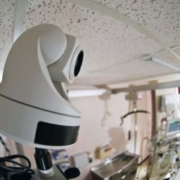A common theme is improvement in access to critical care services and consistent delivery of high-quality care. The improved quality extends beyond ICU mortality and length-of-stay metrics to implementation and adherence to specific best-practice protocols; supporting the teams at bedside; and the ability to bring structure, standardization, and collaboration to units
The ability of properly modified ICU telemedicine programs to increase case volume and access to high-quality critical care with improved annual direct contribution margins suggests that there is a financial argument to encourage the wider adoption of ICU telemedicine
Technology-enabled remote care can be used to provide continuous ICU patient management and to achieve improved clinical and economic outcomes. This intervention’s success suggests that remote care programs may provide a means of improving quality of care and reducing costs when on-site intensivist coverage is not available
After adjusting for demographics, illness severity, admission diagnosis, and facility, ICU telemedicine was associated with overall reduced transfers … this reduction occurred in patients with moderate, moderate to high, and high illness severity and in nonsurgical patients. Transfers decreased in patients admitted with GI and respiratory admission diagnoses..
The addition of a supplemental, telemedicine-based, remote intensivist program was associated with improved clinical outcomes and hospital financial performance… telemedicine may provide a means for hospitals to achieve quality improvements associated with intensivist care using fewer intensivists.
In the absence of a defined insurer reimbursement model for care delivery, revenue sources for a tele-ICU system depend entirely on the organizational structure of the system/network and variable contractual relationships between entities. A few different revenue models appear to currently exist.
If tele-ICU systems were broadly and effectively implemented in Massachusetts, it is conservatively calculated that more than 350 additional lives could be saved each year, the hospitals would benefit financially, and the potential savings for payers would exceed $122 million annually
Formal ICU telemedicine programs now support 11% of non-federal hospital critically ill adult patients. There is increasingly robust evidence of association with lower ICU and hospital mortality and shorter ICU and hospital length of stay. Early studies suggest that implementation of ICU telemedicine programs has been associated with lower numbers of malpractice claims and costs
The purpose of the tele-ICU is not to replace bedside clinicians or bedside care, but to provide improved safety and to enhance outcomes through standardization. The tele-ICU is a “second set of eyes” that provides additional clinical surveillance and support










